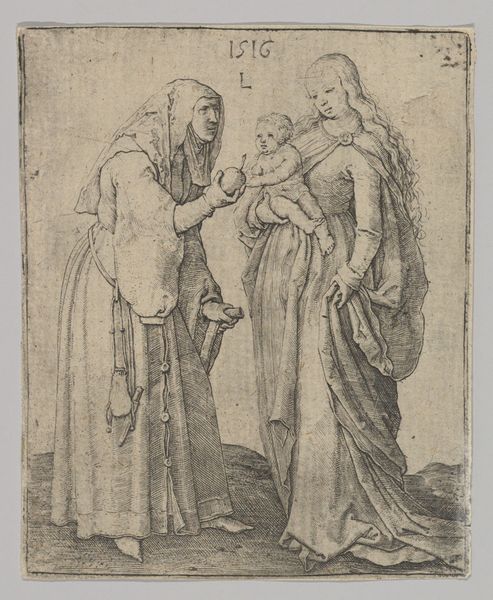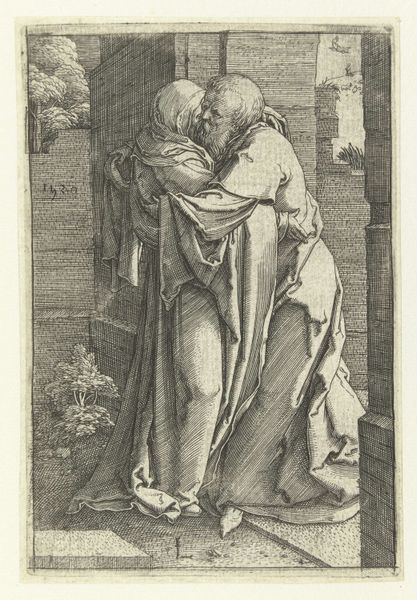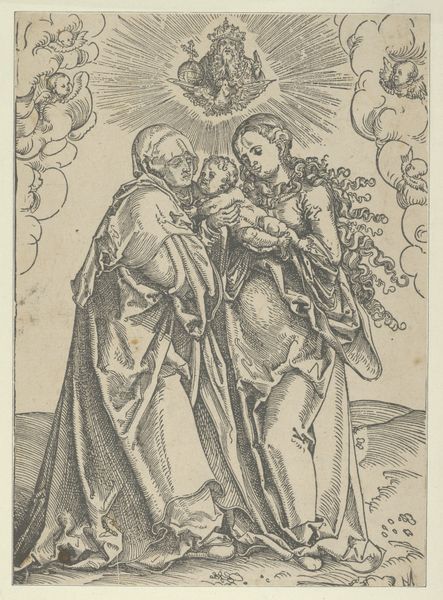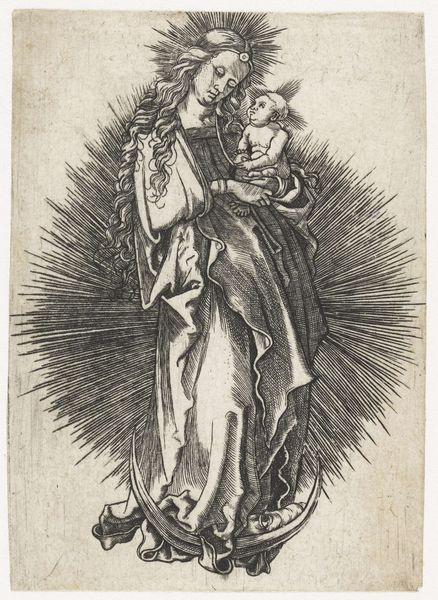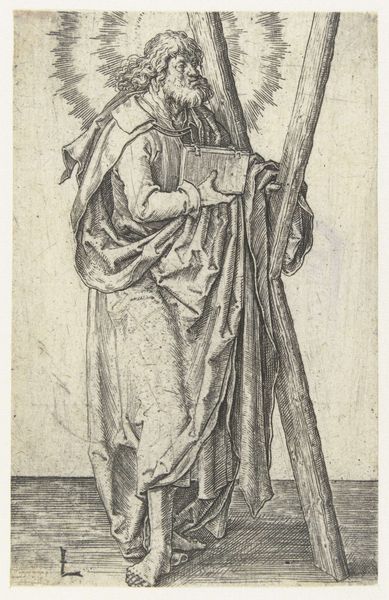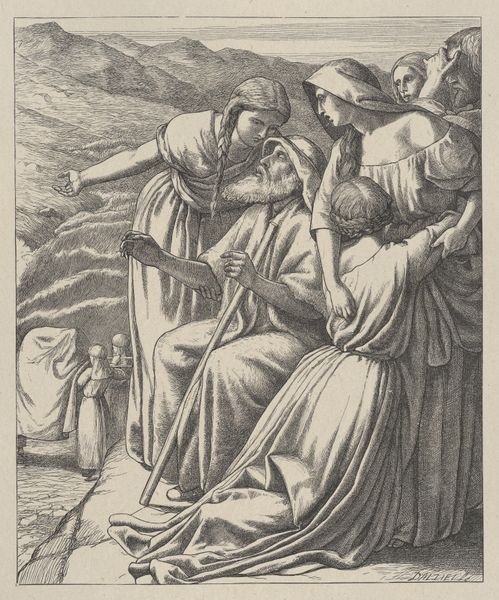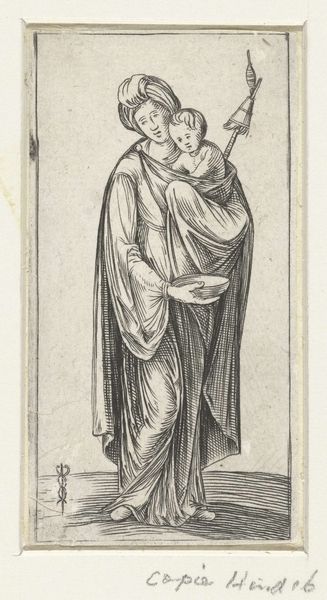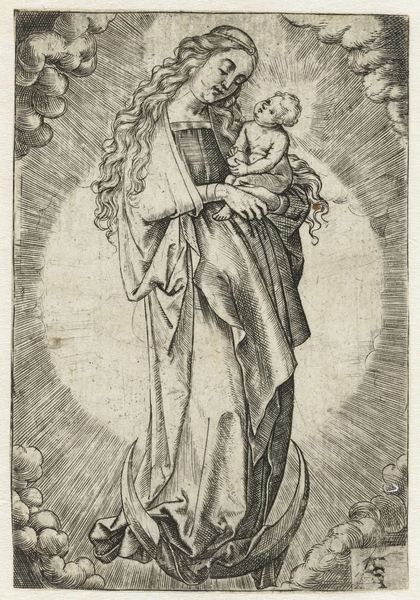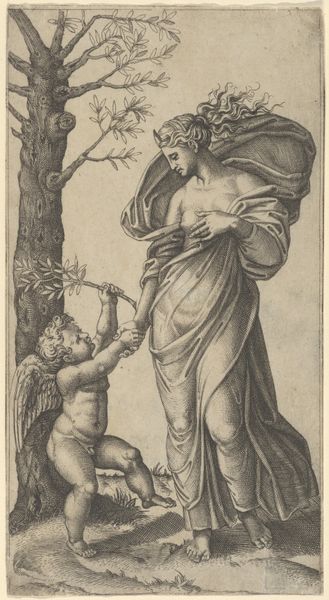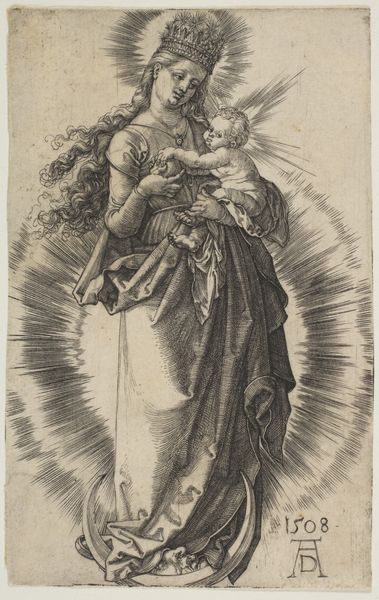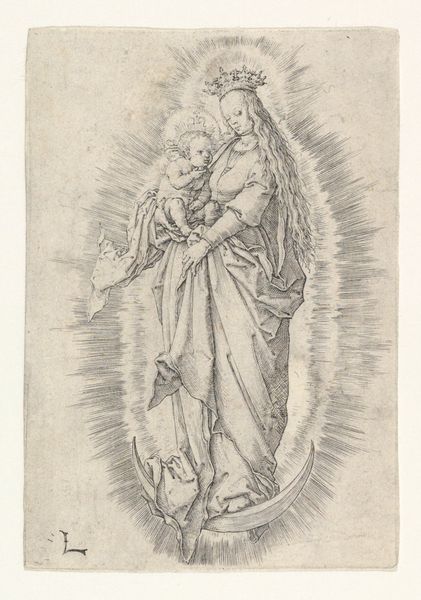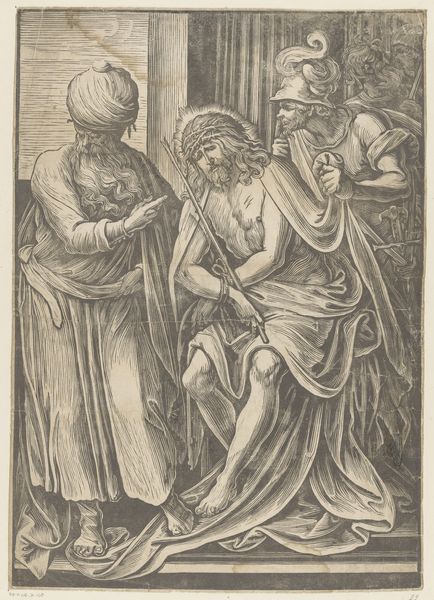
print, engraving
# print
#
figuration
#
line
#
history-painting
#
northern-renaissance
#
engraving
Dimensions: sheet (trimmed within plate mark): 10.8 x 8.1 cm (4 1/4 x 3 3/16 in.)
Copyright: National Gallery of Art: CC0 1.0
Curator: This print, "The Visitation," was created by Lucas van Leyden around 1520. The medium is engraving, a technique favored during the Northern Renaissance. What's your initial response? Editor: The textures! I’m immediately drawn to the interplay of light and shadow created by the engraved lines. It feels so intimate, almost claustrophobic, despite being an outdoor scene. Curator: Intimacy is key. Van Leyden presents a crucial moment in the Gospels: the meeting of Mary and Elizabeth, both pregnant, yet set against the wider backdrop of religious authority of the 16th Century. This particular presentation diverges somewhat from earlier depictions, inviting a more accessible experience. Editor: It does feel charged with something raw, though, almost rebellious. I can't help but view it through a feminist lens: two women, bound by faith and the shared miracle of pregnancy, finding strength in each other, irrespective of the social and patriarchal structures of their era. The gazes are turned inward; it is as if they’re validating their experience alone. Curator: Certainly, placing this image within the social framework is vital. Prints like this would have been accessible to a wider audience than paintings. This availability challenged the elite circles' control over religious imagery. Van Leyden wasn't simply illustrating a bible story. He was participating in the broader religious discourse of the Reformation, albeit subtly. Editor: And consider how Lucas has rendered these figures. Notice the faces are soft while the line-work emphasizes their bodies; the focus becomes their lived, tangible experience, not abstract virtues. There’s a sense of shared joy but also shared struggle – perhaps a subtle nod to the hardship motherhood placed upon women throughout history. Curator: It's a powerful interpretation, emphasizing the active roles these women held, whether socially sanctioned or otherwise. Viewing it through a contemporary theoretical lens, it brings new meaning to an event that shaped the modern religious landscape. Editor: It challenges viewers even today to recognize that history has space for multiple experiences that still influence modern concepts. Curator: Absolutely. I’m struck once more at the remarkable use of line. This tiny piece presents us with monumental themes about power, faith, and feminine experience. Editor: It leaves me wondering what kinds of unspoken support these two women really sought to manifest during their visit.
Comments
No comments
Be the first to comment and join the conversation on the ultimate creative platform.
